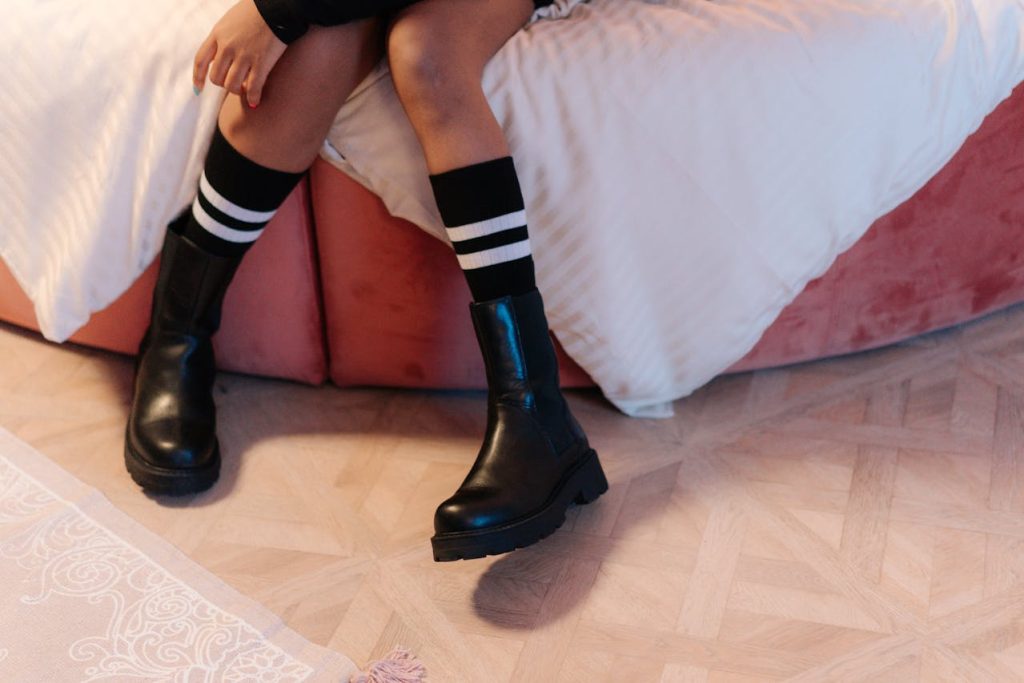
Flat feet are a common yet often overlooked condition that can impact your daily life in more ways than you might think. If you’ve ever noticed uneven wear on the heels of your shoes, you may wonder whether flat feet could be to blame. The truth is, our feet play a crucial role in how we walk and stand, and any irregularities can lead to various issues—one of which may include wearing down those beloved pairs of shoes faster than you’d like. In this post, we’ll explore what flat feet are all about, how they develop, and what it means for your footwear choices. Let’s dive into the world beneath our soles!
Understanding Flat Feet
Flat feet, also known as fallen arches, occur when the arch of the foot is either very low or completely collapsed. This condition affects how weight is distributed across the foot and can lead to discomfort during everyday activities like walking or standing. Many people may not even realize they have flat feet until they start experiencing pain.
The structure of our feet plays a vital role in overall balance and stability. When your arches are too low, it can cause misalignment in other areas of your body, such as your knees and hips. This misalignment often contributes to various issues beyond just foot pain.
Understanding flat feet is crucial for anyone experiencing related symptoms. Identifying whether you have this condition could be the first step towards improved comfort and better shoe choices that cater specifically to your needs.
Check if you have flat feet
Flat feet, or fallen arches, can be easily identified with a simple test. Wet your feet and step onto a piece of paper or cardboard. Observe the imprint left behind. If you see a full footprint without much of an arch in the middle, it’s likely you have flat feet.
Another method involves standing on tiptoes. If your arches do not rise when lifting your heels off the ground, this can indicate flat feet as well. Pay attention to any discomfort during this activity; pain might suggest alignment issues.
Consult with a healthcare professional if you’re uncertain. They can provide additional assessments and determine whether flat feet are impacting your daily life or shoe wear patterns. Knowing for sure helps guide next steps for treatment or adaptation.
Causes of flat feet
Flat feet can develop from various factors. One common cause is genetics; if your parents had flat feet, there’s a higher chance you might too. This inherited trait affects the arches in your feet, leading to a flatter appearance.
Another significant factor is age. As we grow older, the ligaments and tendons in our feet may weaken, making it difficult for the arch to maintain its shape. This gradual loss of elasticity can lead to flat-footedness over time.
Injuries or conditions such as arthritis can also contribute to flat feet. Trauma can damage the structures that support your arch, while inflammatory diseases might affect how these components function together. Identifying these causes helps guide effective treatment options down the line.
Considerations for Flat Feet Treatment
When it comes to treating flat feet, there are several factors to consider. Understanding the severity of your condition is crucial. Some people may experience minimal symptoms, while others might have significant pain or discomfort that affects their daily activities.
Non-urgent advice for managing flat feet often includes choosing supportive footwear. Shoes with arch support and cushioning can help alleviate pressure on the heels and improve overall comfort. Additionally, incorporating foot exercises into your routine can strengthen muscles and enhance stability.
For those seeking more targeted interventions, various treatments are available. Options range from custom orthotics designed specifically for your foot structure to physical therapy aimed at improving flexibility and strength. In certain cases, surgical options may be explored if conservative measures fail to provide relief.
Non-urgent advice for flat feet
If you suspect flat feet, start by observing how your feet feel during daily activities. Discomfort or fatigue can indicate that it’s time to assess your footwear and posture. Choosing supportive shoes can make a significant difference.
Incorporating gentle stretching exercises may also alleviate some discomfort associated with flat feet. Focus on calf stretches and toe curls to strengthen the muscles in your feet. This simple routine has the potential to ease pressure over time.
Additionally, consider using orthotic inserts in your shoes for added support. These custom solutions help distribute weight evenly and reduce strain on specific areas of your foot, making everyday walking more comfortable without needing urgent medical intervention.
Treatments available
When dealing with flat feet, several treatment options can help manage discomfort and improve foot function. Orthotic insoles are often the first line of defense. These custom or over-the-counter inserts provide support and cushioning, which can alleviate pressure on your heels.
Another effective approach is physical therapy. A trained therapist can guide you through exercises that strengthen the muscles in your feet and lower legs, improving stability and reducing pain. Stretching routines may also enhance flexibility and comfort during daily activities.
For some individuals, footwear plays a crucial role in managing flat feet. Choosing shoes with proper arch support can significantly reduce wear on shoe heels while promoting better alignment for your feet. This simple adjustment might be all you need to extend the lifespan of your favorite pair of shoes.
Surgery for flat feet
Surgery for flat feet is typically considered a last resort when conservative treatments fail to provide relief. The procedure aims to correct structural abnormalities in the foot, which can help restore proper alignment and function. Various surgical techniques exist depending on the severity of the condition and individual needs.
Common surgeries include tendon transfers, fusions, or osteotomies that realign bones in the foot. Recovery times vary; some patients may need several months before returning to regular activities. Post-operative rehabilitation often involves physical therapy to strengthen muscles and improve mobility.
It’s essential for those considering surgery to consult with a podiatrist who specializes in such conditions. They can assess whether surgery is necessary based on symptoms, lifestyle impact, and overall health status. This tailored approach ensures that patients receive appropriate care suited to their unique circumstances.
Self-refer to a podiatrist
If you’re dealing with flat feet and experiencing excessive wear on the heels of your shoes, it may be time to seek professional help. A podiatrist specializes in foot health and can provide personalized advice tailored to your unique situation.
You don’t need a referral from a general practitioner to see one. Self-referring allows you to take control of your foot care. During an appointment, the podiatrist will assess your condition, discuss any pain or discomfort you’re experiencing, and recommend appropriate treatments.
Whether it’s custom orthotics, stretching exercises, or footwear adjustments, having expert guidance can make all the difference. Don’t let flat feet hold you back—consider consulting a podiatrist today for effective solutions tailored just for you!

I’m an enthusiast of digital finance and online entertainment, with extensive experience in the worlds of cryptocurrency, sports betting, and casino gaming. My mission is to provide readers with reliable information to help them make informed decisions in the realm of online gambling and digital investments. On this blog, I share the latest trends, platform reviews, and tips for safe and responsible gaming.
More Stories
What color shoes to wear with gray pants?
How to clean patent leather shoes?
What shoes to wear with grey suit?